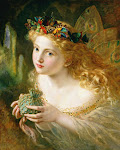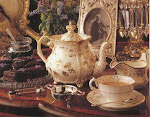
The Language of Flowers (taken from special edition volume published by Pastimes)
The Victorians formalised and expanded the language of flowers to provide every sentiment and occasion with a floral code. However, this practice has its origins much further back in history. By Shakespeare's time, flowers conveyed messages that were well known to the girls who were the life equivalents of Peridta in A Winter's Tale and Ophelia in Hamlet.
The need for a code arose because the freedom enjoyed by today's young lovers was denied their predecessors. Suitors were not always approved of, in which case the tiny, discreet pimpernel would bear the message, 'assignation', or the less discreet rose or red tulip would say, 'I love you'. The message back was not always encouraging, a striped carnation would convey 'refusal', or worse, the frog ophrys would mean 'disgust'. Receiving that would take a lot of getting over! One's knowledge of this language had to be extensive. Some flowers had radically different meanings, depending on the colour of the one given, and the scope for error was alarming. Fortunately, little handbooks were available for the Victorian suitor to make sure he got it right.
Behind this floral code was a less easily detected but fascinating tradition stretching back into antiquity, in which flowers and plants featured prominently in myth and folklore and were greatly prized for their powers of healing and protection.
























.jpg)


















No comments:
Post a Comment